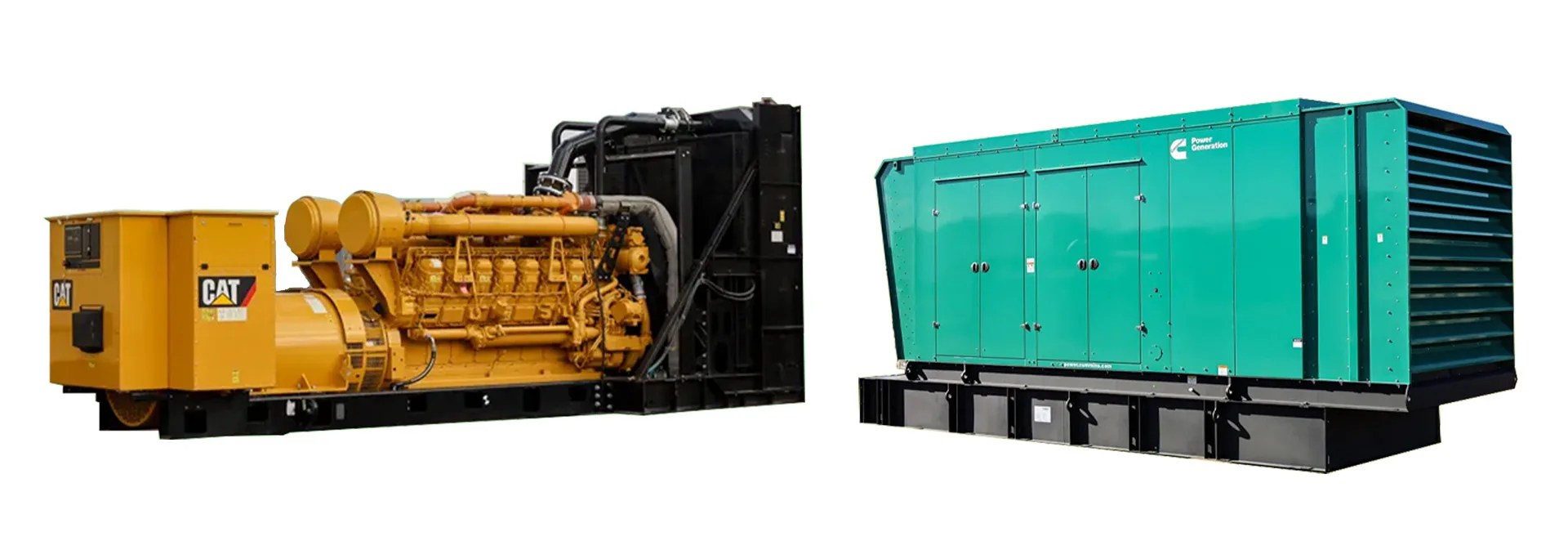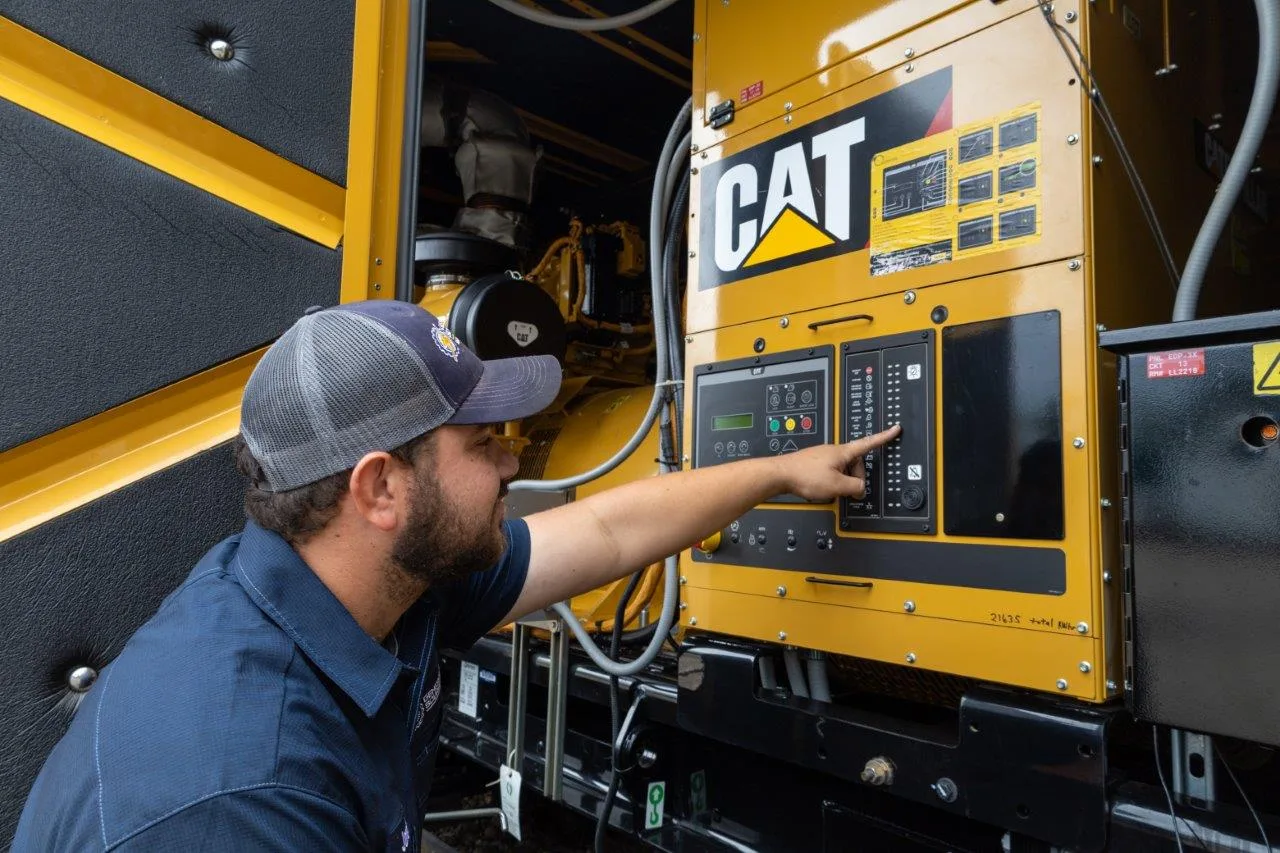
Powering Industries for 50+ Years
Meeting NFPA 99 & 110 Standards, A Guide to Healthcare Backup Power Compliance
Generator Sales, Service, & Rentals
In a healthcare facility, the electrical grid is more than a utility, it’s a lifeline. When an outage occurs, the seamless transition to backup power is not a matter of convenience; it can be the difference between life and death. The systems powering ventilators in the ICU, surgical equipment in the OR, and critical patient monitors must perform flawlessly, every time.
This zero-failure tolerance is why healthcare backup power is governed by some of the most stringent codes and standards in any industry. At Generator Source, we understand that providing power to a hospital is about more than kilowatts and load calculations. It’s about patient safety, regulatory compliance, and upholding the trust of your community.
This guide is designed for Facility Managers, Engineers, and Compliance Officers. We will walk you through the essential requirements of the NFPA, The Joint Commission (TJC), and CMS to help you ensure your facility’s emergency power supply system (EPSS) is not just reliable, but fully compliant.
We will cover:
- The key regulations governing healthcare power.
- The structure of the Essential Electrical System (EES).
- Sizing and selection criteria for hospital generators.
- The non-negotiable testing and maintenance protocols.
Chapter 1: The Regulatory Landscape – NFPA, TJC, and CMS
Navigating healthcare compliance requires speaking the language of the governing bodies. Here are the key players:
- NFPA 99 – Health Care Facilities Code: This is the foundational code. It defines the risk categories for different areas of your facility and dictates the type of electrical system required for each.
- NFPA 110 – Standard for Emergency and Standby Power Systems: This is the “how-to” standard for your generator system itself. It specifies performance, installation, testing, and maintenance requirements, including the critical 10-second startup rule.
- The Joint Commission (TJC): The primary accrediting body for U.S. hospitals. During surveys, TJC inspectors will rigorously review your generator testing logs and maintenance records to ensure you are compliant with NFPA standards.
- CMS (Centers for Medicare & Medicaid Services): CMS provides federal funding and ties it directly to TJC accreditation. Simply put, non-compliance with TJC and NFPA standards puts your funding at risk.
Chapter 2: The Essential Electrical System (EES)
Per NFPA 99, the EES is the portion of the facility’s electrical system that is required to keep running during an outage. It is not a single system but is comprised of three distinct branches, each powering specific functions:
- Life Safety Branch: This branch powers systems required to help people safely exit the building during an emergency. It is not for medical treatment.
- Examples: Egress lighting, exit signs, fire alarm systems, automatic door locks.
- Critical Branch: This is the most important branch for patient care. It powers circuits and equipment in areas where failure is likely to cause injury or death to patients or staff.
- Examples: Life support equipment (ventilators), operating room lighting and receptacles, ICU patient monitors, critical nurse call systems.
- Equipment Branch: This branch supports major electrical equipment that is essential for facility operation, but whose brief interruption would not be immediately life-threatening.
- Examples: Medical air compressors, medical vacuum pumps, specialized ventilation systems, and select lab equipment.
Understanding what is on each branch is the first step in correctly sizing your generator and ensuring compliance.
Chapter 3: Generator Sizing and Selection for Hospitals
Sizing a generator for a hospital is a meticulous process based on the calculated loads of the three EES branches.
- Load Calculation: Unlike a data center, the focus is on a detailed, circuit-by-circuit calculation of the connected load on the Life Safety, Critical, and Equipment branches. This calculation must account for the high inrush currents of large motor-driven equipment like HVAC and medical air compressors.
- The 10-Second Rule: NFPA 110 mandates that your EPSS must be able to detect a power failure, start up, and supply power to the EES branches in 10 seconds or less. This requirement dictates the choice of generator, engine, and automatic transfer switch (ATS) to ensure a rapid and reliable transfer.
- Fuel Source – The Case for Diesel: While natural gas is an option, on-site fuel storage is a major consideration for TJC surveyors. Diesel generators with a large, on-site fuel tank (typically providing 72-96 hours of runtime) are the industry standard because they are a self-contained, reliable resource not dependent on an external utility pipeline that could fail during a natural disaster.
Chapter 4: The Heart of Compliance, Testing and Maintenance
Your generator is only as good as its last test. The Joint Commission places immense emphasis on proper testing and, most importantly, meticulous documentation. NFPA 110 sets the minimum testing schedule:
- Weekly Inspections: A visual check of the system’s condition. This includes checking fuel levels, battery chargers, oil levels, and ensuring the unit is clean and ready.
- Monthly Load Testing: The generator must be run under load for at least 30 continuous minutes each month. The system must reach a minimum of 30% of its nameplate kW rating. If the facility’s EES load isn’t high enough, an external load bank must be used to meet this requirement.
- Triennial (3-Year) Load Testing: At least once every 36 months, the generator must be tested for a continuous 4-hour period. This comprehensive test often requires a larger load bank to properly exercise the engine and cooling system.
Expert Tip: Documentation is everything. Every inspection, test, and repair must be logged in detail. These logs are the first thing a TJC surveyor will ask to see.
Generator Source in Action, A Surgical Wing Expansion
The Challenge: A regional hospital was adding a new surgical wing with four state-of-the-art operating rooms. Their existing 500kW generator was already near capacity and could not support the new critical loads.
Our Solution: We performed a comprehensive load analysis of their entire Essential Electrical System, including the new wing. We designed a turnkey solution that included:
- A new 1,250kW diesel generator with a 72-hour fuel tank.
- A new main Automatic Transfer Switch (ATS) capable of handling the full load with a transfer time of under 6 seconds.
- A complete commissioning and testing process, including a 4-hour load bank test to establish a performance baseline.
The Result: The hospital’s new wing opened on schedule. During their next TJC survey, the emergency power system was reviewed, and the detailed documentation we provided resulted in zero findings. The facility is now fully compliant and has the capacity for future growth.

Your Partner In Compliance and Patient Safety
Ensuring your healthcare facility’s backup power system is compliant is a complex and ongoing responsibility. It requires deep expertise in electrical engineering and an intimate understanding of the regulatory landscape. Don’t navigate compliance alone. Our team specializes in designing, installing, and maintaining NFPA-compliant power systems for healthcare facilities.
Contact Generator Source today for a compliance review of your current system or to discuss the power requirements for your next project.
Immediate Availability
Browse 350+ new, used and surplus industrial generators available now and ready to ship.

